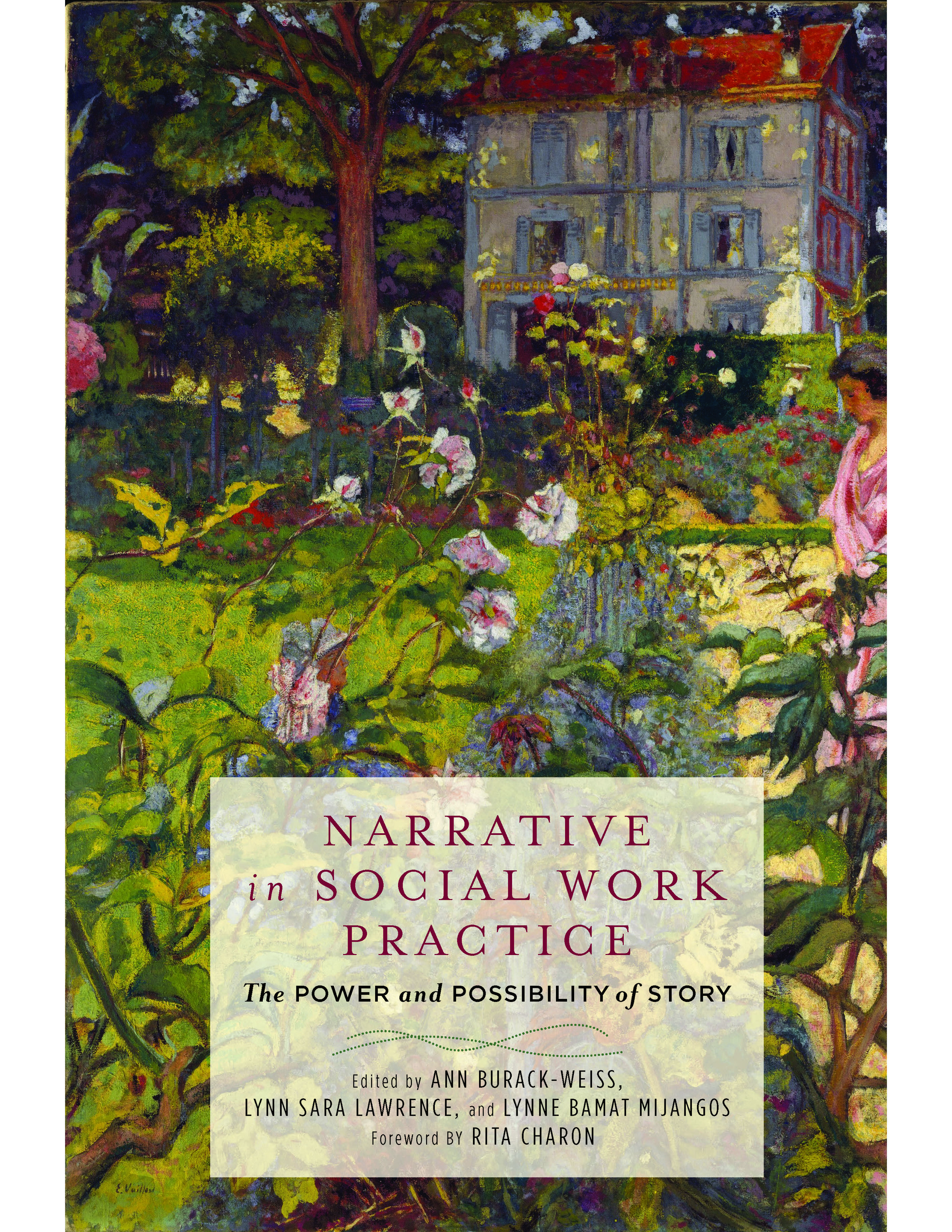Narrative in Social Work Practice: The Power and Possibility of Story by Ann Burack-Weiss, Lynn Sara Lawrence and Lynne Bamat Mijangos.
She is 7. She is small…yet she fills the entire room…this child…has been raped... But she is still sturdy, she still smiles…this child of 7 is a giant, a superhero." —Social worker Kristen Slesar, writing about a young client
“My mother and I are on our way to the store. A gnome, dressed in curly-toed shoes, striped stockings, and pointy cap, waits on the sidewalk. He tries to pinch me. My mother cannot see the gnome. I try to hide, wrapping myself in her skirt…” —Social worker Lynne Mijangos, describing a dream she had
In a wonderful new book, Narrative in Social Work Practice: The Power and Possibility of Story (Columbia University Press, 2017), editors Ann Burack-Weiss, Lynn Sara Lawrence and Lynne Bamat Mijangos have gathered intimate, first-person accounts by social workers who have found creative ways to integrate narrative techniques into their work.
In some chapters, the social workers describe how they have developed and used narrative interventions with a wide range of individuals, families, and groups facing a variety of life challenges. In others, they share how they have turned their narrative skills inward and used them to deepen their self-understanding. In each instance, they use the tools of narrative training—close reading, attentive listening, reflective writing, and bearing witness to suffering —to help themselves and others confront and overcome external and internal barriers.
In one chapter, social worker Lauren Taylor uses psychotherapy and oral history to help clients find deeper meaning in their lives. Taylor describes her work with Marvlous, an African American woman who is depressed and in pain. As they talk, Taylor realizes that this sharp 95-year-old is a living historical archive. Working together, Taylor helps Marvlous, who at first thinks she has nothing much to say, recount and preserve the story she and her ancestors played in African American history. Taylor also describes her work with Joe, a 68-year-old man who is contemplating suicide. In the course of their work, Joe, who always dreamed of becoming an actor, writes and performs in a triumphant one-man show about his life.
Demonstrating the cross-border potential of narrative medicine, Benaifer Bhada talks about the narrative work she did with HIV-infected truck drivers in Kenya, and how participation in the group helped the men overcome feelings of shame and isolation, enabling them to seek appropriate treatment.
What do these stories have in common? In eloquent fashion, they all demonstrate how sharing our stories can help us break out of isolation and find our voices and our communities—at every stage of life —even as our bodies and cognitive abilities begin to deteriorate. Working with adults with dementia, Mary Hume uses poetry, co-constructed by the group, to express themselves, affirm their own value and continue to participate in their community:
“I like the smell of lilacs in May time;
For me that’s the best playtime
I like to bake crullers that are bestsellers
I like to throw confetti when they’re serving spaghetti…”
—Social worker Mary Hume, co-creating poetry with clients in dementia care
Some readers will want to dip in and out of these stories, which will give them a sense of the benefits of narrative practice in social work. But once one starts reading the stories, it's hard to skip around and instead read straight through. Each story is rich in its unique details and emotional truthfulness, making the book hard to put down.—Nelly Edmondson
NELLY EDMONDSON is a graduate of the Narrative Medicine Master's program at Columbia University. She also is an award-winning editor and writer with extensive experience covering medical topics for print and online outlets. In addition to serving as a staff editor at publications such as Weight Watchers Magazine and Ladies’ Home Journal, she has written articles for the The New York Times, Parents, MAMM Magazine, as well as medical-school websites and publications such as Einstein Magazine and The Chironian. http://www.nellyedmondson.com


